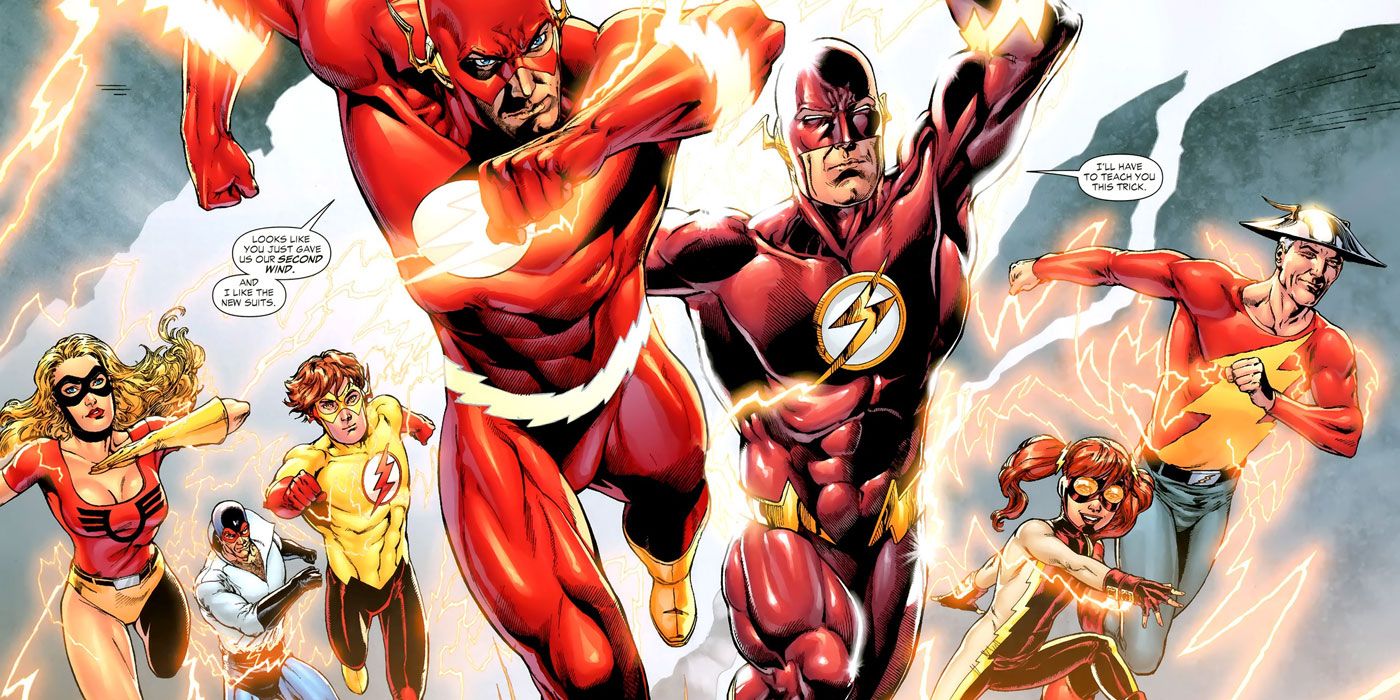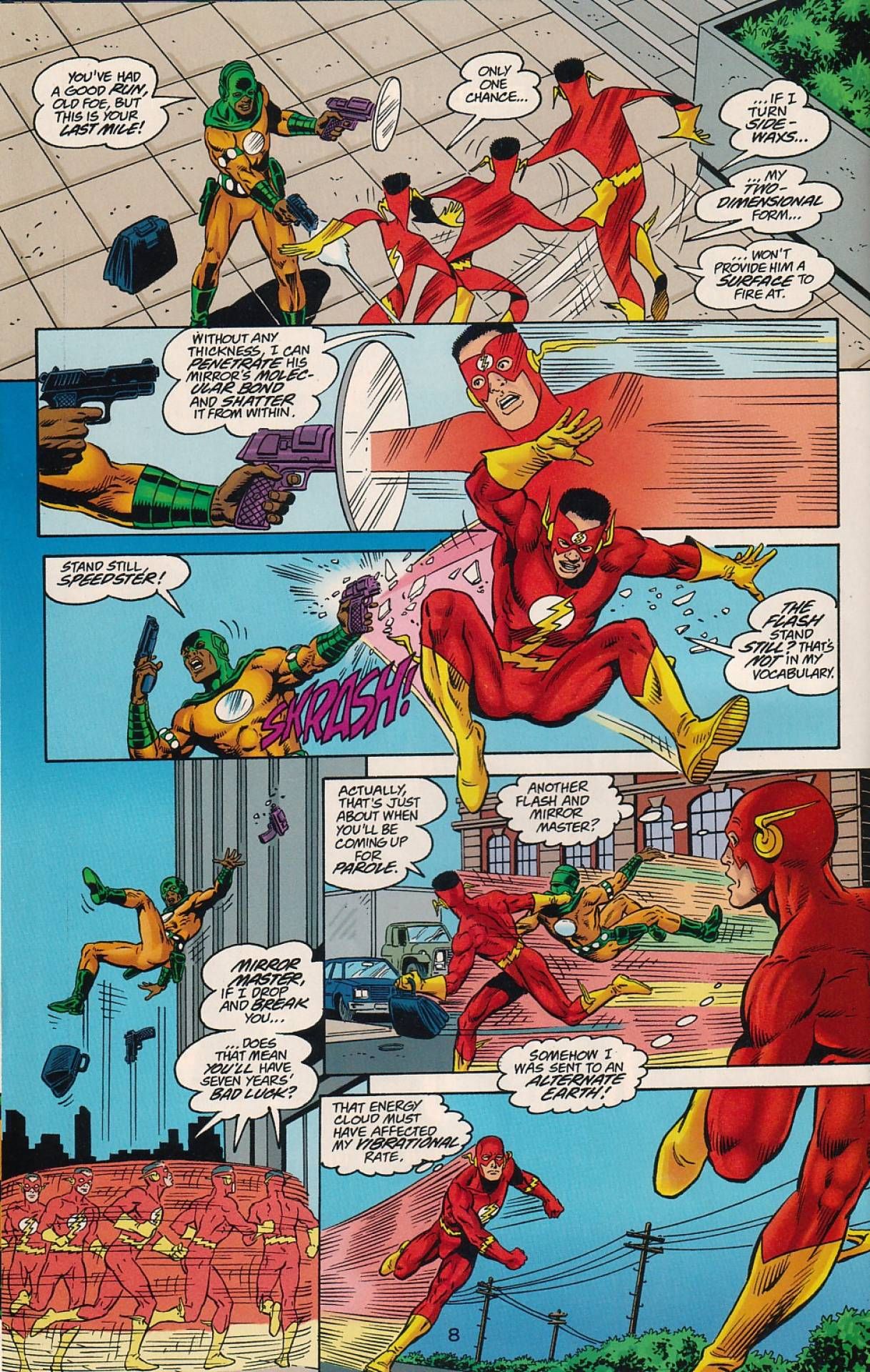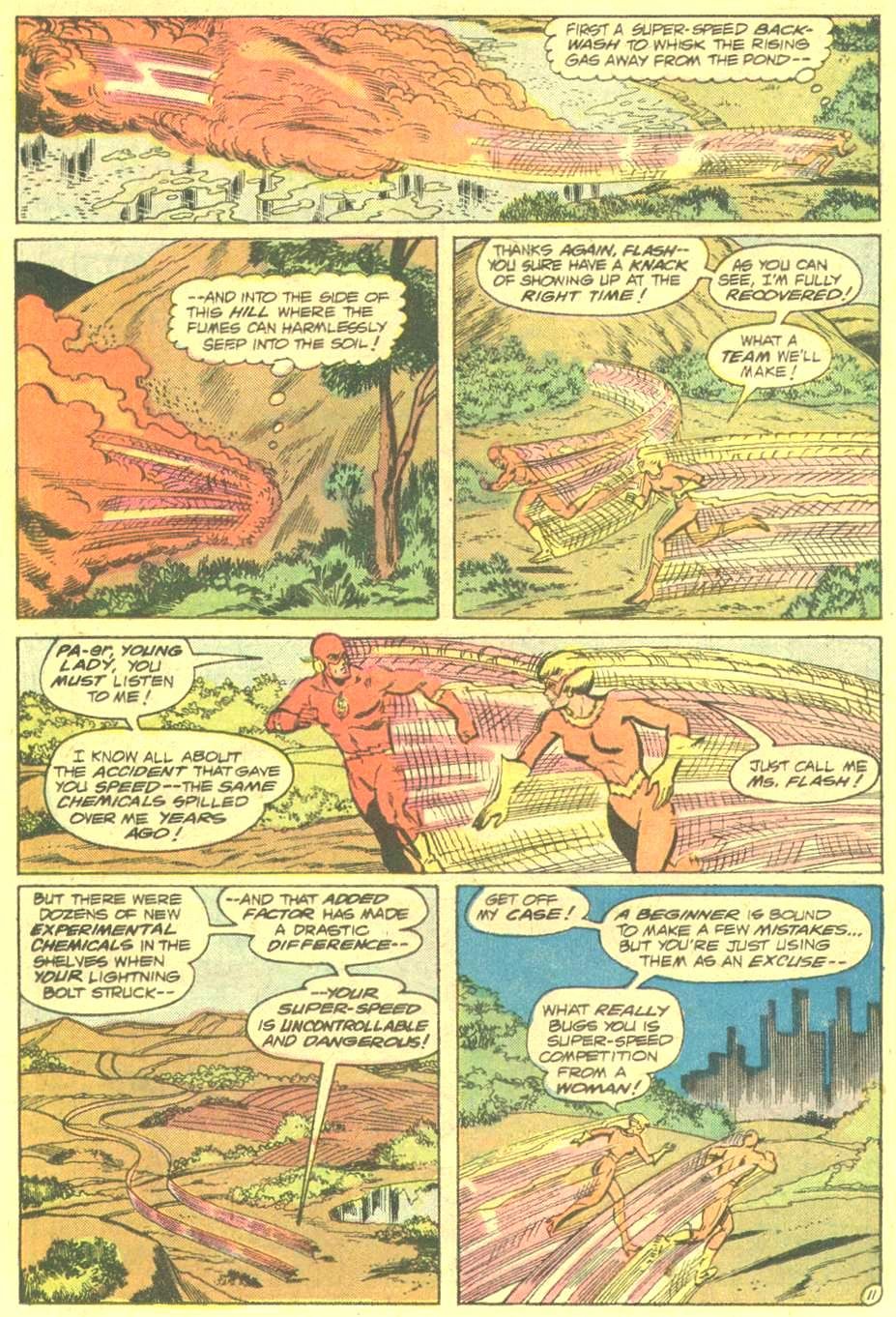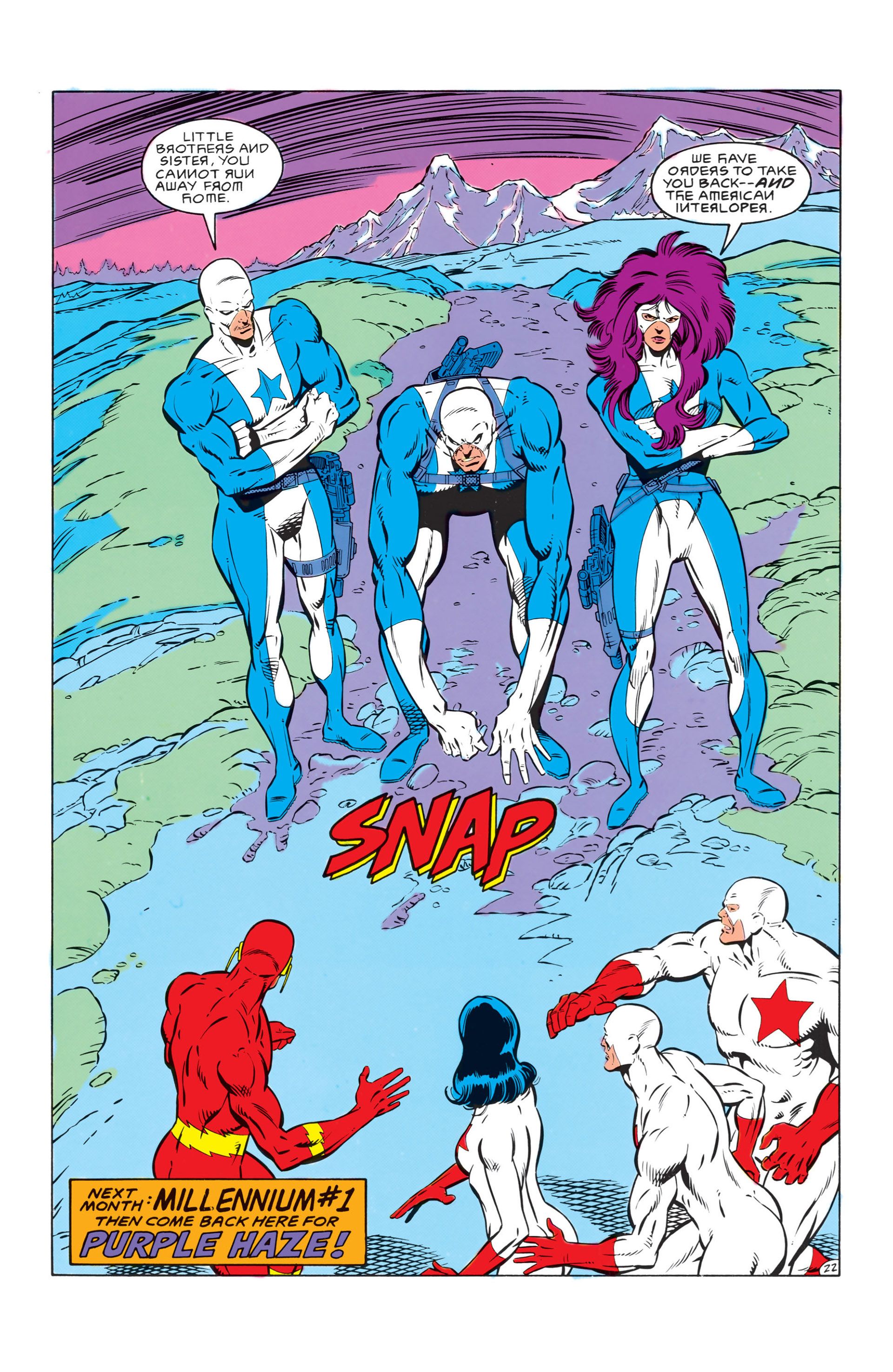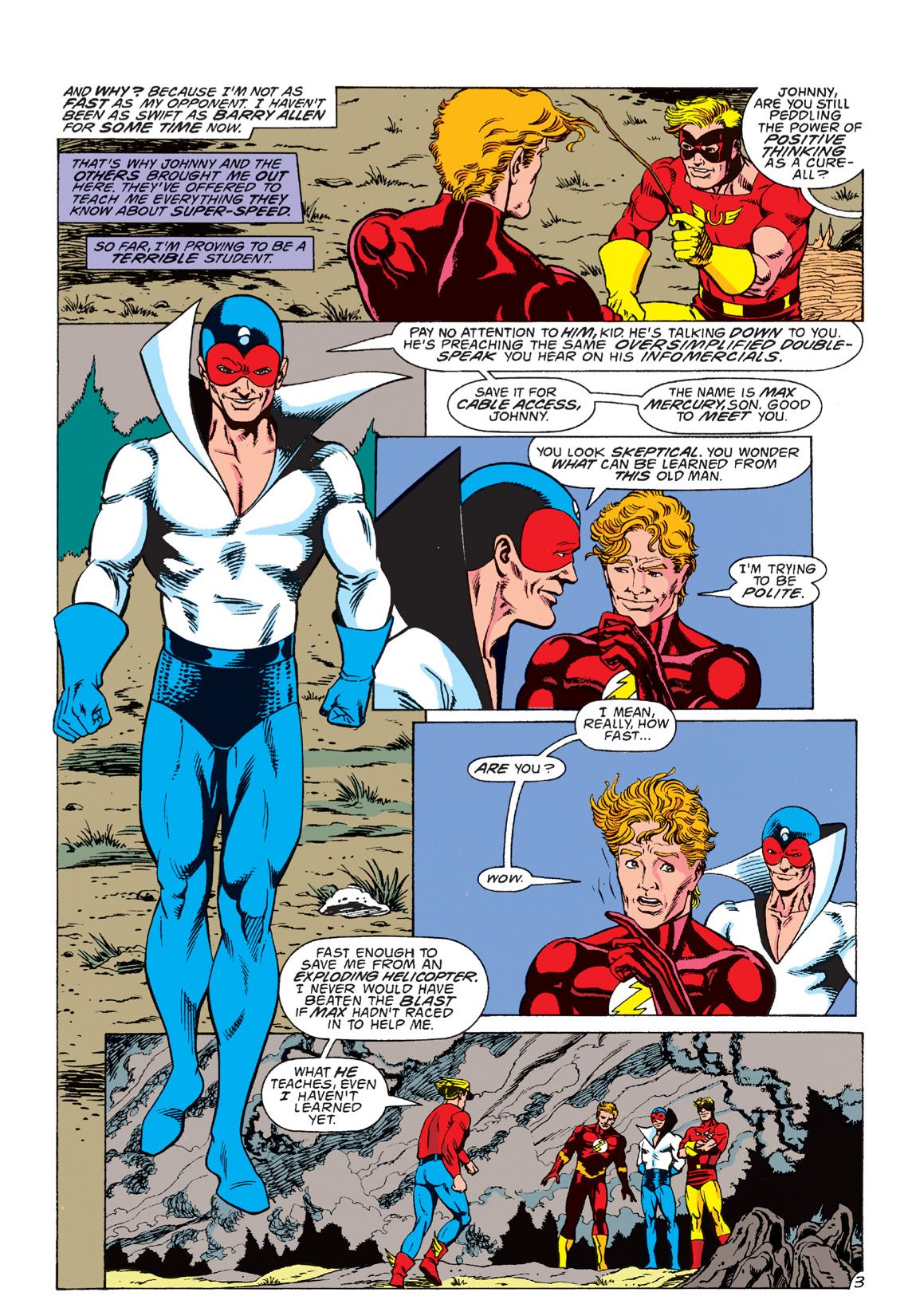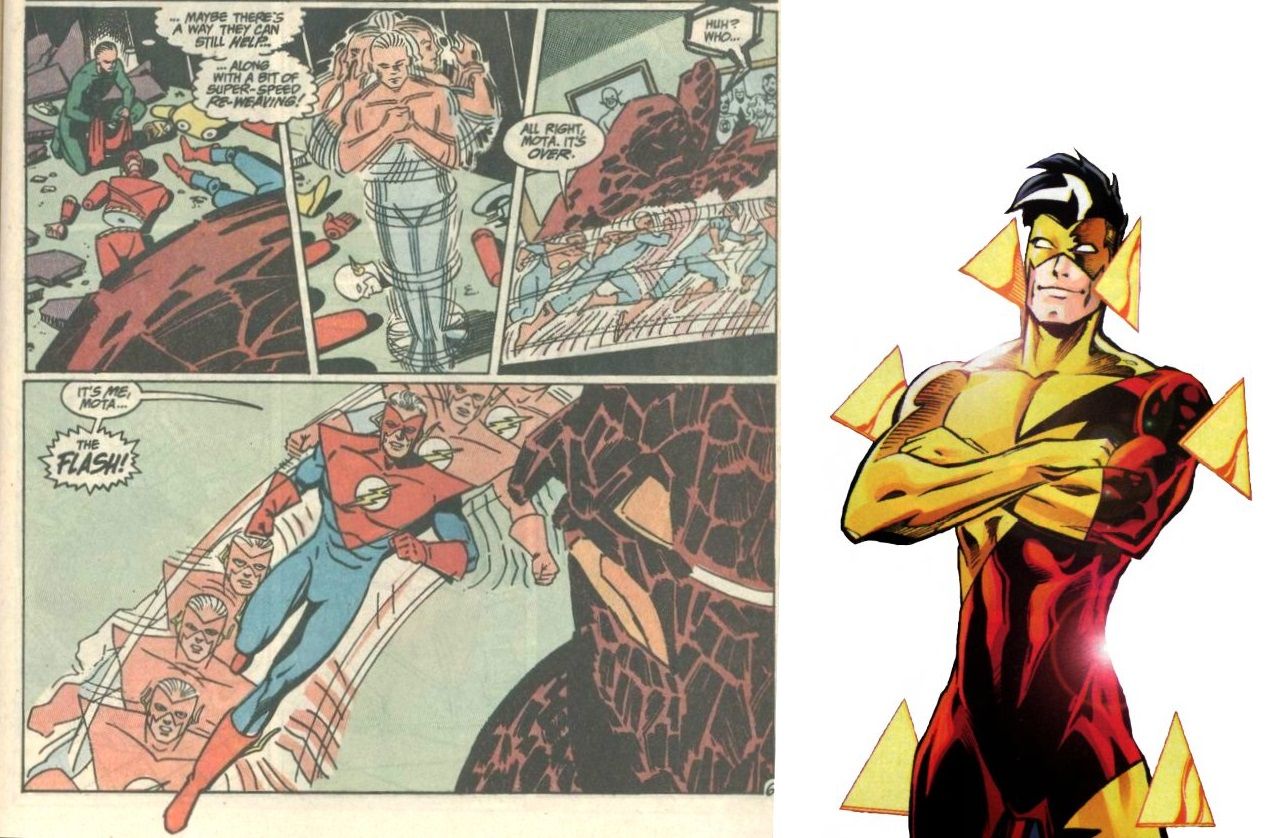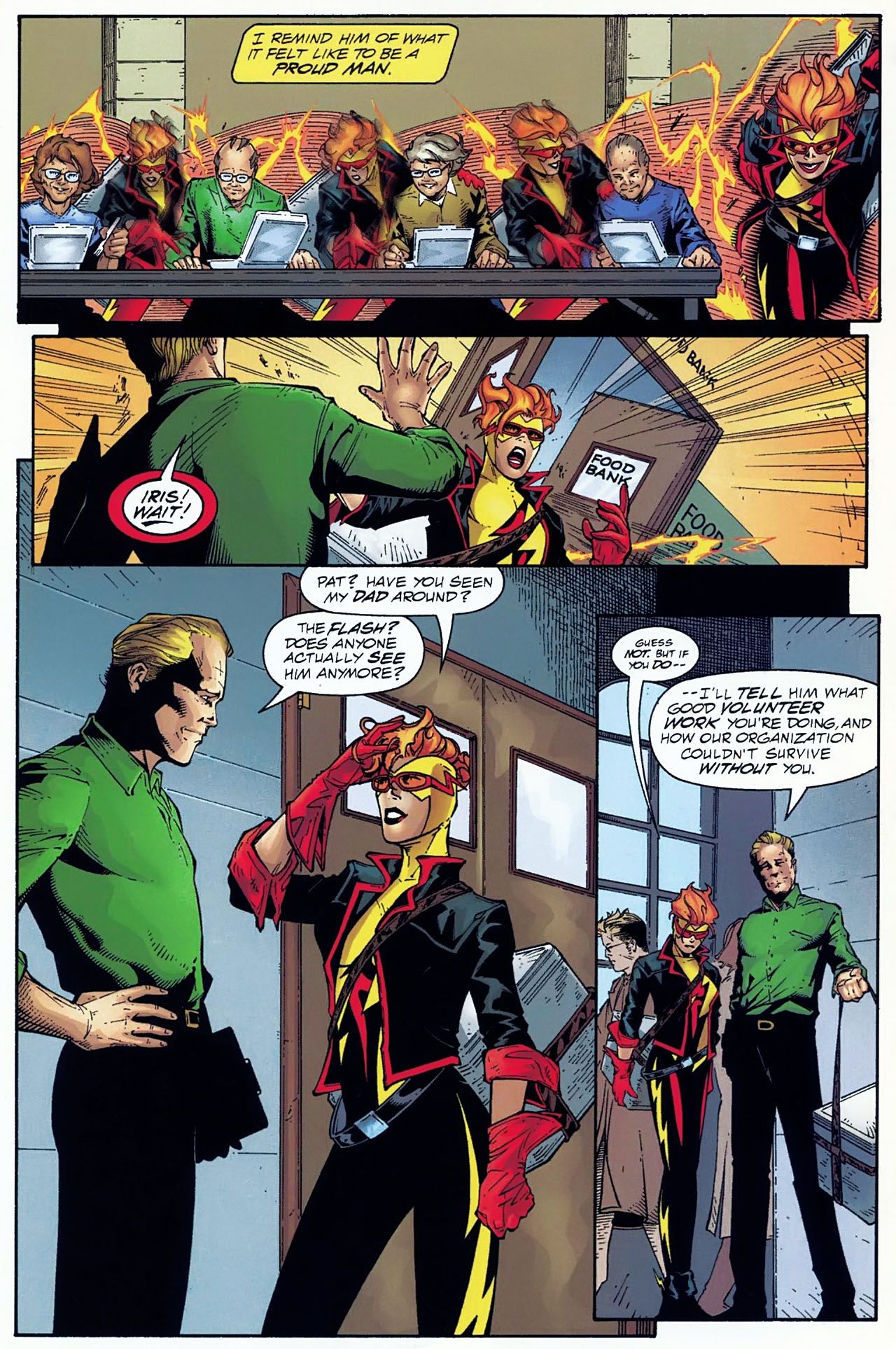In its two-and-a-half seasons, The CW's "The Flash" has brought to life several super-speedsters from the comics. Joining headliner Barry Allen have been adversaries Reverse-Flash (Eobard Thawne), Zoom (Hunter Zolomon), Trajectory, Rival and Savitar; and allies Jay Garrick (the Flash of Earth-3), Jesse Quick and Wally "Kid Flash" West. The February 28 episode "Attack on Central City" will add another, the Accelerated Man. For longtime Flash fans this just makes sense. After all, everybody knows the Accelerated Man, right?
Right?
Okay, so the Accelerated Man isn't exactly an A-lister. (Not yet, at least.) We'll get to that. More importantly, we're hoping "The Flash" will tackle several other speedsters, and sooner rather than later.
MULTIVERSAL MOVERS
As mentioned above, the Accelerated Man -- created by Grant Morrison and Giuseppe Camuncoli -- is just the latest parallel-Earth speedster Team Flash has encountered. In the comics he hails from Earth-19, a world whose super-people first started appearing in the late 19th Century. So far we've seen Earth-19 in the 1989 graphic novel "Batman: Gotham by Gaslight" (written by Mark Waid and drawn by Mike Mignola and P. Craig Russell), its 1991 sequel "Batman: Master of the Future" (written by Brian Augustyn and drawn by Ed Barreto) and 1997's heretofore-unrelated "Wonder Woman: Amazonia" (written by William Messner-Loebs and drawn by Phil Winslade). The "Multiversity" miniseries put all these stories on Earth-19 and added Flash and Atom analogues (the latter called "The Shrinking Man") for good measure.
We suspect the "Flash" brain trust chose Accelerated Man because H.R. Wells hails from The CW's version of Earth-19, where everything is just different enough to be annoying. (Also, Accelerated Man may be after Gypsy, who -- spoilers -- is working with Gorilla Grodd.) We're sure Accelerated Man is perfectly fine; don't get us wrong. Regardless, it's a big Multiverse, with plenty of room for other speedsters.
At the head of our list is Tanaka Rei, the Flash of Earth-D. Created by Marv Wolfman and Paul Ryan, Tanaka and the rest of Earth-D first appeared in 1998's "Legends of the DC Universe: Crisis On Infinite Earths Special." Billed as an untold tale of DC's epochal event, the Special told how the heroes of the more familiar Earths -- including Barry Allen -- teamed up with Earth-D's multicultural Justice Alliance between "Crisis" issues #4 and #5, in hopes of saving one more parallel universe. (Spoilers: they couldn't.)
Fortunately, bringing Tanaka to The CW wouldn't have to involve a multiversal Crisis. We want to see this speedster because he knows Barry primarily as a fictional character, and we think "The Flash" can update that to Tanaka being a big fan of The CW's superhero shows. After all, in the Silver Age Barry read the exploits of Jay Garrick in "Flash Comics," so why shouldn't a parallel-world Flash be inspired by Grant Gustin's television adventures? It's not like anyone reads comics anymore.
Another Multiversal speedster with a unique connection to Barry would be Patty Spivot. Most recently, in both the comics and on TV, Patty has been Barry's colleague and girlfriend; and apart from a brief stint as the crimefighter Hot Pursuit, hasn't ever had an alter ego. The exception goes all the way back to her first appearance in September 1977's "DC Special Series" issue #1, a/k/a the "Five-Star Super-Hero Spectacular."
In a story by Cary Bates and Irv Novick called "How To Prevent A Flash," Patty got doused with a slightly different set of chemicals. Since this made her super-speedy, she decided to put on a costume and adopt a codename -- the very 1970s "Ms. Flash." Trouble was, the different chemicals caused her super-speed to blow things up, and she was well on her way to destroying Central City when Barry realized it was all a speed-induced dream. Basically, Barry's super-fast mind extrapolated the whole catastrophic series of events in the seconds between when the chemicals spilled and when they would have reached Patty. He pushed her out of the way, she never got super-speed, and Central City was saved.
You can probably see where this is going. Although eventually she discovered that Barry was the Flash, the Patty of The CW's Earth-1 had a somewhat complicated relationship with metahumans in general and the Flash specifically. Teaming Earth-1's Barry with a different Earth's version of Patty, and particularly one with super-speed, might give each of them new perspectives on the other, as well as facilitating any necessary closure. Besides, Shantel VanSanten and Grant Gustin had a lot of chemistry together (crime-lab pun intended). We're not expecting to see Earth-1's Patty again, but we liked her while she lasted and we'd enjoy seeing Barry squirm if another version of her returned.
On a less-weighty note, "The Flash" has already brought telepathic super-gorillas and other assorted CGI creations to the small screen, and we think it's time the show embrace its more cartoony elements. That's right, send Barry to Earth-C (or Earth-26) and have him team up with Fastback of the Zoo Crew! What better way to counter the show's periodic dalliances with angst and responsibility than to go to a world where you can literally bounce back from terminal injuries? If we were running "The Flash" we'd make it a side-trip as part of this season's Savitar storyline. We bet even the God of Speed would be completely flummoxed by a cartoon landscape.
However it might happen, we really want an Earth-C crossover with "The Flash's" parent show. We are dying to see Oliver Queen's reaction to the "Green Sparrow" snarling "You have failed Starfish City!"
Ahem. But we digress.
FAST FRIENDS
Season One of "Legends of Tomorrow" revealed that the Soviet Union had been working on its own Firestorm, so there's precedent for "The Flash" introducing Russian super-speedsters Red Trinity and Blue Trinity. Two sets of three speedsters each (hence the names), they were created by Mike Baron and Jackson Guice and appeared first in"Flash" vol. 2 issues #6 (November 1987) and #7 (December 1987), respectively. Both were part of the military, with the Blue team being the prototype for the Red team; and all got super-speed through combinations of gene-splicing, steroids and implants -- in other words, not by more familiar sorts of chemical or radiation accidents. Wally West helped Red Trinity defect to the West, fending off Blue Trinity when it was sent to retrieve them. Red Trinity then hired itself out as a delivery service, "Kapitalist Kouriers."
Naturally we think there's potential for "The Flash" to co-opt some of "Arrow's" Russia-based backstory -- certainly the Bratva would be interested in super-fast enforcers -- but we'd also enjoy Barry and Wally reacting to speedsters using their powers for personal gain. It wasn't too long ago that Wally was earning money by driving fast cars; and while Barry's finances might be solid, they're also a little murky. The show hasn't been that interested in how its characters make money; but it couldn't hurt for "The Flash" to settle why its speedsters don't spend all their free time hauling packages or pizza.
Speaking of pizza, "The Flash's" speedsters could learn a little something about teamwork from the Spanish-speaking Más y Menos. Created for the November 2004 "Titans East" two-parter in the "Teen Titans" animated series, the adolescent brothers could only use their speed when they were touching. Although Barry has been training Wally to work with him, for the most part "The Flash's" speedsters haven't been combining their efforts, and they're certainly not as in sync as Más y Menos need to be. Since the show's messages tend not to be subtle, we'd expect the storyline to involve some sort of power-switching, so that Barry and Wally (or perhaps a post-breakup Wally and Jesse) would spend most of the episode grumbling about being in such close quarters. It'd be like the old horror movie "The Incredible Two-Headed Transplant," except more like "The Incredible Four-Legged Speedster."
When "The Flash" needs more advanced instruction on the Speed Force, we suspect it will turn to the Zen Master himself, Max Mercury. Created by Jack Cole and Chuck Mazoujian for November 1940's "National Comics" issue #5, Max was originally called "Quicksilver," but the popularity of a certain Marvel mutant forced the name change. Still, Max/Quicksilver appeared in "National Comics" through August 1949's issue #73, dropping into limbo about fifteen years before Pietro Maximoff's debut in March 1964's "X-Men" issue #4.
Writer Mark Waid and penciller Greg LaRocque brought Max back as a mentor to Wally West in May 1993's "Flash" vol. 2 issue #76, as part of the landmark "Return of Barry Allen" storyline. Waid explained that over the years, Max had multiple heroic identities including Ahwenota, Windrunner and Whip Whirlwind; and had bounced through time from the Civil War to the 1890s, 1940s, 1960s and the present day. In that storyline and others, Max's involvement opened Wally's eyes not just to his own potential, but to his place in what would become a centuries-spanning Flash legacy. To be sure, TV's Barry tends to take on a lot of responsibility (not to mention blame), and we could see him freaking out over the prospect of being the "Flash patriarch."
Even so, TV-Barry has never had a proper super-speed mentor. Season One's "Harrison Wells" was Eobard Thawne in disguise, helping Barry only so far as it served his master plan. Season Two's "Jay Garrick" was Hunter Zolomon/Zoom, manipulating Barry similarly. In Season Three Barry has trained Jesse and Wally, but none of them have the sort of Speed Force awareness Max could bring to the table. For that matter, demonstrating that Max knows more than Barry would change Barry's relationships with Jesse and Wally (and would probably result in more than a few Yoda/Padawan references from Cisco). Besides, for once it would give the show a speedster who was farther along than Barry and wasn't out to kill him.
FUTURE FLASHES
By focusing on Barry and Iris Allen, "The Flash" has baked into its premise the notion that one or both of them are destined to die, as their comics inspirations did. In an earlier post we described Iris' convoluted comics backstory, suggesting that if "The Flash" did try to "kill" Iris, it should do what the comics did and have her 30th Century parents save her life. While Max Mercury can tell Barry all he's learned from decades of running, he hasn't seen the future.
In the comics that future involved two branches of the Flash family tree, the Allens and the Wests. When Barry's first comics series ended in the summer of 1985 (October's "Flash" vol. 1 issue #350), it set up his and Iris' retirement to a pre-Legion of Super-Heroes 30th Century. There they had twins -- specifically, the "Tornado Twins" Don and Dawn Allen, both endowed with super-speed powers. This revised the twins' backstory, since Don and Dawn had been created by Jim Shooter and Win Mortimer for the Legion story in October 1968's "Adventure Comics" issue #373.
Subsequently, writer Mark Waid revealed that Don and Dawn each died at the hands of the Dominators (again, in a pre-Legion future), but not before having children of their own. Dawn's daughter Jenni Ognatz stayed in the 30th Century and joined the Legion as the speedster XS, while Iris brought Don's son Bart back to the 20th Century, where he became Wally West's protegé Impulse (later Kid Flash II and Flash IV). XS was created by Tom McCraw and Jeffrey Moy and first appeared in October 1994's "Legionnaires" issue #0; and Waid and Mike Wieringo created Bart, who appeared first in July 1994's "Flash" vol. 2 issue #92.
Because we're not sure what The CW plans to do with the Legion (seems like they'll show up on "Supergirl" first, what with Mon-El and the flight ring), we're not ready to suggest that "The Flash" introduce XS. Still, that just makes us more eager to see Barry and Iris' reactions to meeting their grandson. As with our hypothetical Más y Menos episode, we expect Bart to come along at a low point in his grandparents' romance.
As for the West branch, Waid and artist Alex Ross began exploring Wally's potential heirs in 1996's alternate-future miniseries "Kingdom Come." There, Wally was a Speed Force phantom, driven by guilt and moving so quickly that few could catch a glimpse of him. His daughter Iris West II was literally more visible, fighting crime in a modified version of her dad's old duds as Kid Flash II. According to the follow-up miniseries "The Kingdom," Iris' brother Barry West also had super-speed powers, but chose instead to be a slacker, disappointing Wally and angering Iris.
When Wally and Linda Park eventually did have children (as of October 2005's "Flash" vol. 2 issue #225, written by Geoff Johns and pencilled by Howard Porter), they were also twins, Iris and Jai West. Eventually, both Iris and Jai demonstrated super-speed powers, and at the end of 2010's "Flash: Rebirth" miniseries (by Johns and Ethan Van Sciver), Iris had become Impulse II. We don't have a problem with any of that -- in fact, we're wondering how long it will take to bring back all the speedsters from that miniseries -- but in terms of adapting characters for TV, we're more inclined to suggest the "Kingdom Come" version of Iris West II. Either she's the daughter of Wally West and Jesse Wells and has inherited super-speed from both parents, or she's Wally's daughter by someone else and maybe he's got some explaining to do. Regardless, if Bart Allen can drive home the idea of a Flash legacy for Barry, imagine the impact on Wally (and perhaps Jesse) of seeing his own speedy child -- who'd come along much sooner than Bart, to boot.
Finally, if "The Flash" simply wants to plant the seed of an heroic legacy without the, uh, seed-planting of the Allen or West bloodlines, there's John Fox. Created by Mark Waid and Mike Parobeck for 1990's 50th-anniversary "Flash Special" and named for "Flash" luminaries John Broome and Gardner Fox, John was a 27th Century physicist who traveled through time trying to stop a time-hopping supervillain named Manfred Mota. Because the first three Flashes had defeated Mota already, John tried to recruit Jay Garrick in the 1940s, Barry Allen in the Silver Age and Wally West in 1990. None of them returned with him to 2645, but since the time-trip had somehow given him super-speed, he defeated Mota himself as the new Flash. Later, following a misguided attempt to replace Wally West in the 20th Century ("Flash" vol. 2 issues #112-18, April-October 1996), John couldn't return to his own time and ended up in the 853rd Century of "DC One Million." Joining that era's Justice Legion A, he became one of the future's greatest heroes.
Adapting John Fox to the "Flash" TV series might be tricky. For one thing, it would be yet another potential future which Barry and company might not want to see happen. Additionally, Team Flash has already been burned twice by a) a time-traveling speedster with malevolent ulterior motives and b) a dimension-hopping speedster with malevolent ulterior motives, so you can imagine they'd be skeptical of John's utopian claims. Still, both the 27th and 853rd Centuries are far enough in the future that Team Flash might not feel as much pressure to change things; and again, John's origin doesn't depend on Barry or Wally's relationship statuses. It would be a good way to show "The Flash's" self-awareness about its time-travel plots, and a reassurance that the future is in good hands.
Which speedsters would you like "The Flash" to introduce? Let us know in the comments!

